
© Brett Lockwood. (Click image for larger version)
Looking at some film and audio works presented at the
What does the Future Look Like? festival
Antonio Branco and Riccardo T.: Post Apocrine
Xavier Singer-Kingsmith: Unapologetic
Luke De Kock, Sarah Golding, Teresa Phuti Mojela and Yukito Masui: Transit-20
Katie Beard, Naomi Turner and Liv Lockwood: Scapelands
Ana Paz: Our Body (Soon Come)
Andy Field and Beckie Darlington: A Rain Walk
London, The Place
11–14 March 2021
Overview details and videos post opening run until 28 March 2021
www.theplace.org.uk
How do artists regenerate after this culturally devastating year? What might a radically different future look like and what have we learnt from lockdown that can help take us there? What does the Future Look Like? is the last of The Place’s riveting digital mini-festivals (unless there is another lockdown) and features a range of voice, movement and film work by wildly exciting artists who respond to these difficult questions in creative and progressive ways that generate hope.
Still embedded in a never-ending lockdown, a mixed bill of short films shot over the last year play on its limitations to bring audiences visually and mentally stimulating performance. The films’ creators engage productively with isolation, technology and the significance of space. While reflecting on the trail of destruction left by the pandemic, they muse on various forms of imagined futures that include queer and trans identity, race, climate change and urbanism.
Across all the films is a feeling of defiance, that these young artists will power through uncertainty and precarity to get themselves heard. Some of the films are aesthetically uncompromising such as Antonio Branco and Riccardo T.’s Post Apocrine. Trapped in a confined, digital space, two men face each other; still, silent and naked joined together by their kinky rubber balaclavas. A computer-generated voice utters largely incomprehensible words in a robotic, pulsing rhythm with the occasional word or phrase such as “post-desire, post-human, post-camp and post-gender” drifting to the surface. Without emotion, the performers act out a power relationship that looks like a slow-mo sex show as one man ever so gradually unmasks the other. While their hyper-contained queer narrative elicits a voyeuristic thrill, its meditative quality and unresponsive exchange allows queerness to just be, detached from performative excess.
In Unapologetic, transgender and non-binary performers Katayoun Jalilipour, Naissa Essart-Nielsen and Sakeema Peng Crook stare at the camera defiantly as their bodies ebb and flow in a purple, hazy space. These transgender warriors wearing battle-like costumes that flatten or accentuate their different bodies, designed by fashion designer Guia Berforello, are proud to display their various states of transformation. Individual solos are forceful, intense and elegant framed by director and filmmaker Xavier Singer-Kingsmith sensual camerawork, which pans around the three in rotating circles and close-ups. Here is the celebration of identity without limits.
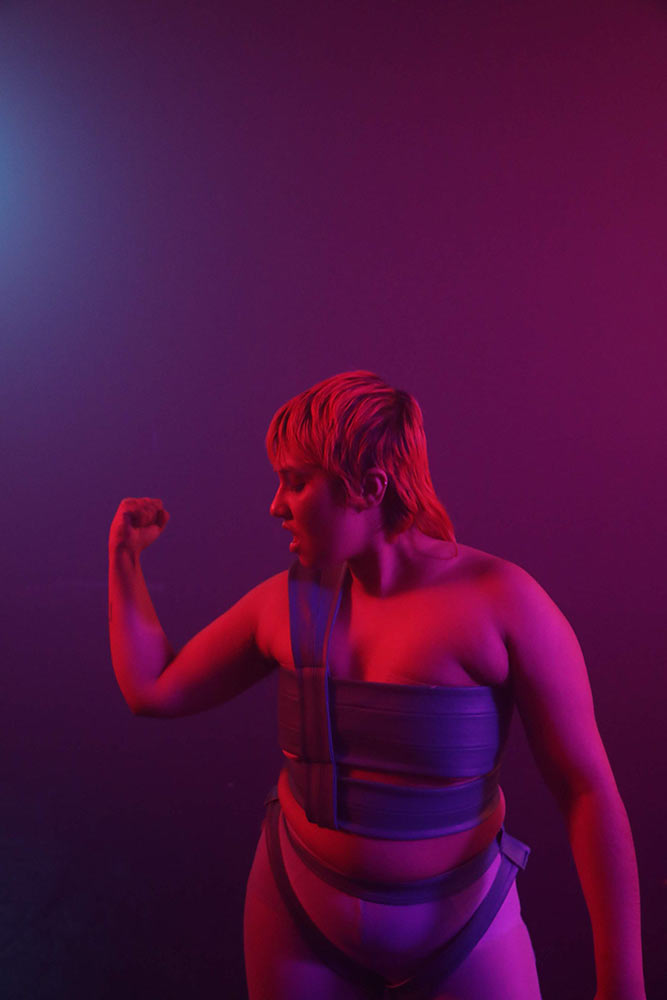
© Nova Lindblom. (Click image for larger version)
Transit-20 is a playful reflection on connectivity and an exploration of possibilities offered by digital technology. Dance artists Luke De Kock, Sarah Golding, Teresa Phuti Mojela and Yukito Masui meet and dance together for the first time from their homes across the geographical divides of London and South Africa. The artists are filmed individually morphing from everyday actions, such as making coffee or washing hands, to detailed, expansive choreographic sequences; the technology miraculously pieces together their idiosyncratic phrases, synchronizing and sorting to resemble a collaborative work. Each dancer moulds their body to the confines of the home as floors, doors, tables or beds become surfaces for dynamic interaction. Escaping from the limits of their locations in emotional movement that expresses some sadness and frustration, they also celebrate the unity that technology can bring.

© Brett Lockwood. (Click image for larger version)
Many people have suffered the claustrophobic effects of urban living during lockdown. In Scapelands directors Katie Beard and Naomi Turner with choreographer Liv Lockwood capture that feeling of being overwhelmed by cityscapes and the people within them. Dancer Rose Sall Sao’s tension and psychological state worsens as she is jostled by people and unsettled by her oppressive environment. The film juxtaposes London’s urban jungle with the rose-tinted cliffs of an empty coastline whose vast beaches and great expanse of ocean allow Sao to finally breathe and release. Scapelands reminds us, through exquisite performance and filming, how much we need to reconnect with nature for healing and rejuvenation.
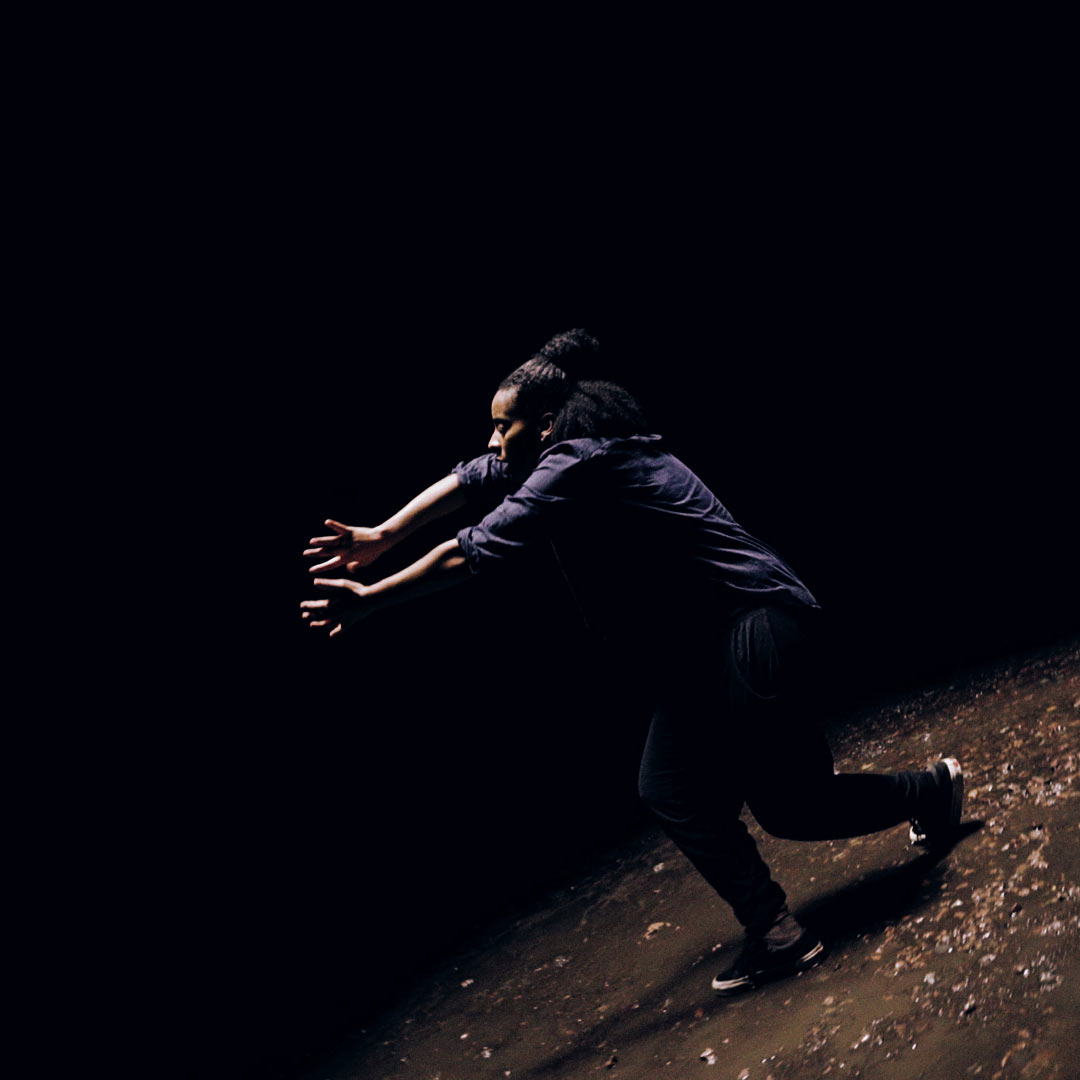
© Paul Phengsiri. (Click image for larger version)
There is no easy solution to mental health issues exacerbated by prolonged isolation which Ana Paz’s disturbingly compelling solo – In Our Body (Soon Come) – foregrounds. The combination of a dank, dripping black tunnel where Paz is confined, her articulate, nuanced spoken word and splintered choreography, forcibly communicates the mess our colonial, capitalist systems have created. Her voice inflected with passion tells of the exploitation of land and peoples, navigating its psychological affects, while her strong, determined body rouses us to take action.
A Rain Walk is something different. An intimate audio experience that invites us, via headphones, to reconnect with things, places and people that we take for granted. Andy Field and Beckie Darlington’s delightfully unusual project invites us to take a walk in the rain guided by the voices of children telling stories and expressing their views on pretty much everything. Inspired by rain and imagery, associations and actions it inspires, we create our own personal theatre. While it feels liberating to jump in puddles or perform a rain dance, think about floods, animals and flowers, it’s the quirky yet measured perspective of the children that’s so comforting and delightful. They communicate their acceptance of the world as it is and what it might be with a frankness and honesty that adds new insight to my walk in the rain. The future they describe in the audio is theirs, not free of fear but nevertheless brimming over with hope and possibility.







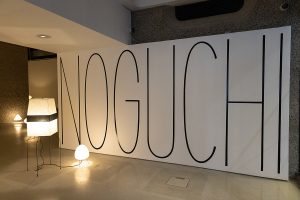

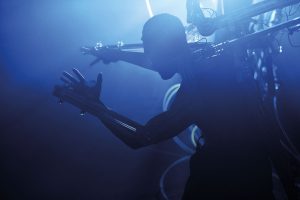



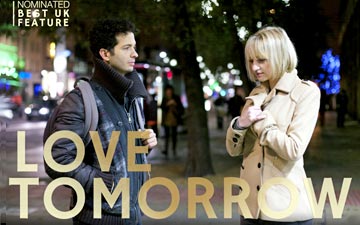

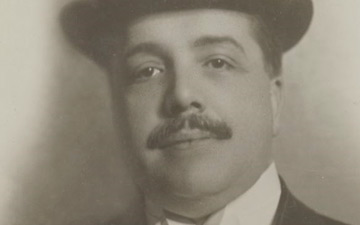

You must be logged in to post a comment.